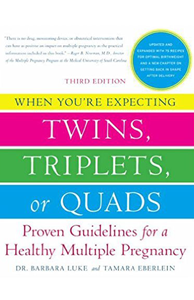This past November, the South Carolina Infant Mortality Rates (IMR) for 2014 were released. Like most of South Carolina’s public health statistics, the results were a mixture of the good, the bad and the ugly.
By way of clarification, the Infant Mortality Rate reflects infant deaths during the first year of life per 1000 livebirths. It’s important to understand that fully three quarters of all infant deaths occur during the first 28 days of life (the neonatal period) and almost all of those deaths are a consequence of premature birth.
The Good is that we no longer have to say, “Thank God for Mississippi.” A decade and a half ago the S.C. IMR was more than 12/1000 livebirths and S.C was snug among the worst 4 or 5 states in the country. For each of the past 3 years South Carolina has set new all-time lows for infant mortality. In 2012, the S.C. IMR fell to 7.2/1000 livebirths. In 2013 it was 6.9/1000 livebirths and the 2014 data documented a new low of 6.5/1000 livebirths. South Carolina is approaching the national average of 6.0/1000 livebirths and now has one of the best IMRs in the Southeast.
The Bad is the significant racial disparity that plagues our state. The IMR for African-American infants in South Carolina is more than double the rates for either Caucasian or Hispanic children. Worse, it is a rate that is going up while all the other racially-specific numbers are falling. In 2014, the white IMR in S.C. was only 4.6/1000 livebirths while the black IMR was 10.2/1000 livebirths. This high African-American rate was also a rise from 2013 when the black infant mortality rate was 10.0/1000 livebirths.
The reasons for this health disparity remain elusive and almost certainly are multi-factorial. South Carolina must deal with a toxic mix of poverty, rurality, and inadequate public education. Inadequate education that results in an African-American population with low medical literacy and a longstanding distrust of the medical system that has used them far longer than it has served them.
The African-American population also suffers from a disproportionate burden of chronic medical conditions such as diabetes, hypertension, heart disease, renal disease and obesity. All of these conditions can complicate pregnancy and are associated with higher risks of infant mortality. These medical problems are compounded by access to care issues due to lack of providers, long distances to care, poor public transportation, inadequate insurance coverage, high out of pocket costs and social distrust. The results are numbers like we have in South Carolina.
In South Carolina, the failure to have at least 5 prenatal visits is associated with a six-fold increase in the Infant Mortality Rate!
The Ugly is that South Carolina is happier with the overall improvement in its IMR than it is concerned over its racial disparity. The state is fighting a court ruling that demands the state provide equal educational support in all our poorest counties. The state continues to refuse Obamacare expansion to a greater number of working poor despite the evidence of unprecedented improvement in our overall IMR over the past 3 years. The state reduces funding for Medicaid services each year as well as funding for our tertiary care medical centers.
So, what can we do?
First, be supportive of any opportunities to help increase public understanding of the importance of prenatal care. Prenatal care should be like voting in Chicago- go early and often. Even better, preconception care should be sought whenever possible. Preconception care presents an opportunity to make sure that immunizations are up to date, provide needed vitamin and mineral supplements (preconception folic acid is proven to reduce both spina bifida and heart defects), review maternal nutrition or assist with weight reduction.
The risk of fetal malformations can be substantially reduced by the preconception control of high blood sugars in diabetic women and by selection of safer anti-hypertensive drugs in women with blood pressure problems. Controlling both hyper and hypothyroidism prior to pregnancy reduces the risk of miscarriage and achieving optimal control of lupus and other auto-immune diseases clearly improves pregnancy outcomes.
There is good news, but do not be deceived. There is much more that needs to be done. Advocate for better prenatal care for all South Carolinians.
While I am a Professor of Ob-Gyn at the Medical University of South Carolina and have been for 30 years, this is a personal blog and the opinions above are mine alone and not those of my employers.
LATE ADDENDUM………. AND THE BETTER
Two days after writing this blog I opened the Post and Courier and read the headline “(Governor) Haley Expands Efforts To Save Infants.”
Recognizing the significant rural and African-American disparity in South Carolina’s IMR, Haley announced a $30 million expansion of a program called the Nurse-Family Partnership.The Nurse-Family Partnership sends perinatal nurses into the homes of first-time, low income mothers. Program nurses meet several times each month with their assigned mothers-to-be throughout pregnancy and then regularly after delivery until their babies turn 2 years of age.
The program has demonstrated success in lowering the rates of preterm birth, NICU admissions and the Infant Mortality Rate for the women served. The program is credited with saving more than four times its cost in reduced Medicaid expenditures for unhealthy newborns.
However, the program is small and the waiting lists are long. Over five years, the $30 million expansion will allow the program to reach an additional 3,200 families in 29 counties compared to 1,200 already served.
The Power of the Pen to Make Change!
The expansion of this program reflects the “power of the pen.” No, not this blog. Many people, including the national director of the Nurse-Family Partnership organization, have credited the Post and Courier‘s award-winning four part series entitled “Cradle of Shame” with catalyzing this action. The Post and Courier report opened many eyes regarding the urban-rural and black-white disparities that exist in S.C.. It highlighted how well the Nurse-Family Partnership had worked both here and in other states.
My only concern is that the expansion is paid for primarily by private donations (including $8 million from the Duke Foundation) and matching Federal funds. What happens in five years when the funds run out?
If the program continues to demonstrate both its effectiveness and cost-effectiveness then we need to hold our state leadership accountable for continuing and further expanding the program. The rubber will meet the road when South Carolina has to invest its own money to help these families in our rural counties.







